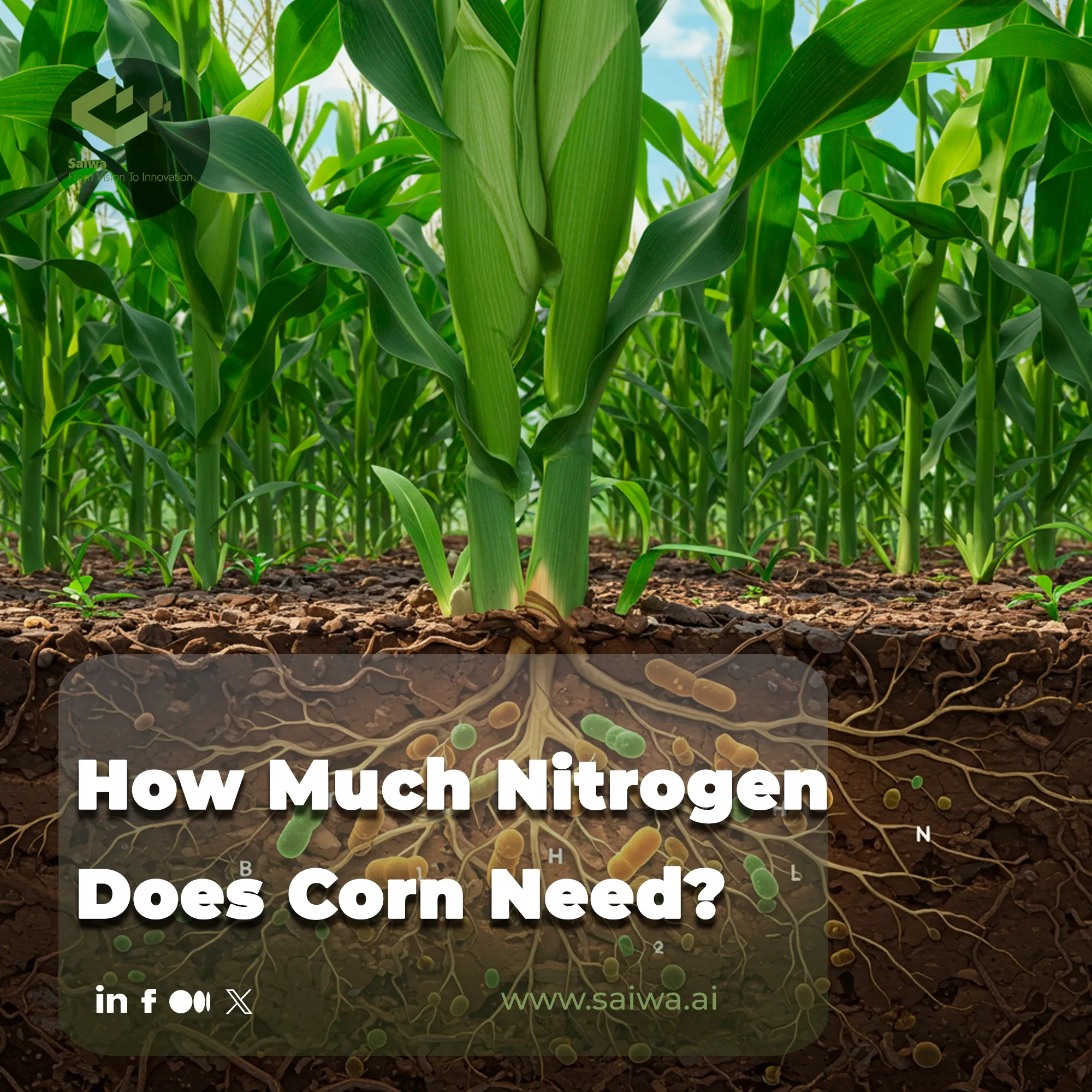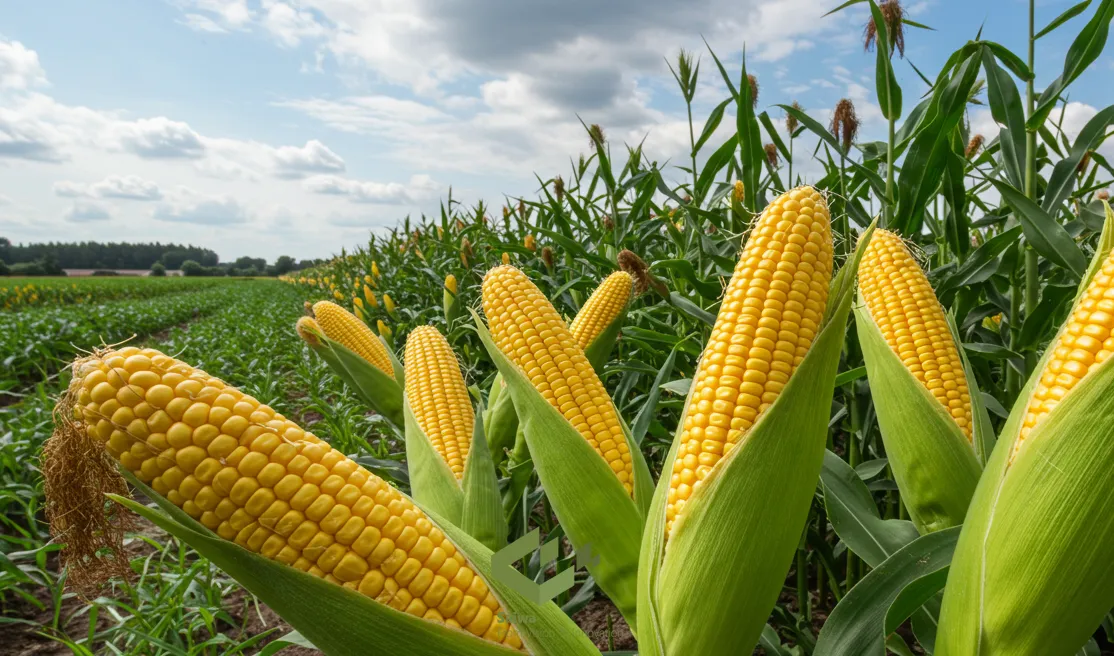How Much Nitrogen Does Corn Need?

Determining the precise nitrogen requirement for corn is a critical agronomic challenge that extends far beyond traditional, simplified formulas. Over-application is not just a waste of capital but also an environmental hazard, while under-application directly cuts into profitability. The future of effective farming hinges on shifting from static assumptions to dynamic, data-driven nutrient management.
Saiwa’s innovative technologies are at the forefront of this evolution, translating complex field data into actionable intelligence. This guide will explore the key variables dictating nitrogen needs and the advanced tools enabling precision management.
What Affects How Much Nitrogen Corn Needs?
The classic "one-pound-per-bushel" guideline is an insufficient oversimplification. A truly accurate assessment of the corn's need for nitrogen must integrate a host of interconnected, field-specific factors. To fine-tune your strategy, it is essential to consider the distinct variables that collectively determine nutrient demand, as we will explore in the following points:
Target Yield Expectations: This must be a realistic, multi-year average for a specific field, not an optimistic or inflated figure.
Crop Rotation History: Corn planted after soybeans requires significantly less nitrogen than corn planted after another corn crop, due to the nitrogen credit left behind by the legume.
Soil Type and Organic Matter: Sandy soils are prone to nitrogen leaching, while heavier clay soils can lose nitrogen through denitrification. Furthermore, soil organic matter acts as a natural reservoir, mineralizing and releasing nitrogen throughout the growing season.
Manure Application: Any applied manure must be factored in as a significant nitrogen credit, with its nutrient content properly analyzed.
Climate and Weather: Environmental conditions, particularly heavy rainfall, can drastically increase nitrogen loss from the root zone.
Benefits of Nitrogen for Corn Production
Nitrogen is one of the most important nutrients for growing healthy, high-yield corn. It fuels growth by helping the plant produce chlorophyll, the green pigment that captures sunlight for photosynthesis, and by building essential proteins and enzymes. When corn has an adequate supply of nitrogen, it develops strong stalks, lush green leaves, and larger, fuller ears. In contrast, a nitrogen shortage leads to pale, yellowing leaves and stunted growth, often resulting in smaller harvests. Balanced nitrogen management boosts yield and improves grain quality and overall crop health. By providing corn with the appropriate amount of nitrogen at the optimal time, farmers can maximize their field's potential while safeguarding the soil and the environment.
How to Make Sure Corn Has Enough Nitrogen
To ensure your corn gets enough nitrogen, start by testing the soil before planting to measure the available nutrients. Watch for yellowing of the lower leaves, which is an early sign of deficiency. Use drone or satellite imagery to spot uneven growth. Tissue testing during key stages, such as the V6 stage, helps confirm nutrient levels. Applying nitrogen in split doses, part at planting and part later, improves efficiency and reduces losses. Modern tools like Sairone use AI and remote sensing to analyze soil, weather, and crop data. This helps farmers deliver precise amounts of nitrogen for healthier plants, higher yields, and reduced environmental impact.
Tools and Technologies for Estimating Nitrogen in Cornfields
Fortunately, modern agriculture offers a sophisticated toolkit to move beyond guesswork. By leveraging precise measurements and analytics, these technologies empower growers to make informed, timely decisions. Here's a closer look at the key innovations shaping modern plant health monitoring and nutrient management.
Soil Nitrate Testing Methods
Direct measurement remains fundamental. Pre-Sidedress Nitrate Tests (PSNT) or deep soil sampling before planting provide a clear baseline of the nitrogen already available in the soil, preventing unnecessary fertilizer application.
Sensor-Based Nitrogen Management
Handheld or tractor-mounted optical sensors (e.g., NDVI sensors) can assess the nitrogen in plants status of the crop in real-time. Research shows the V6 to V8 growth stage is a critical window where sensor readings correlate strongly with final yield, guiding precise in-season fertilizer adjustments.
Satellite and Aerial Imagery with Multispectral/Hyperspectral Analysis
Drone and satellite platforms equipped with advanced cameras capture data from across the light spectrum, revealing subtle variations in crop health and nitrogen stress that are invisible to the naked eye. This allows for creating variable-rate application maps.
Machine Learning and Ensemble Decision Tools
This is where true optimization begins. AI-driven platforms can integrate data from all the aforementioned sources—soil tests, sensor readings, and imagery—to provide a holistic analysis, leading to a much more accurate crop yield estimation.
Read Also: Mapping Nitrogen Content in Crops

Introducing Sairone: A Smarter Way to Manage Nitrogen
Manually interpreting layers of complex agricultural data is a significant challenge. This is the precise problem Sairone solves. By applying powerful AI to high-resolution drone imagery, Sairone automates the analysis of field variability and crop stress. It empowers growers and agronomists to transform raw data into precise, actionable nitrogen management plans with unparalleled efficiency. We invite you to see how Sairone’s analytical power can be integrated into your operations.
Conclusion
Optimizing the corn's need for nitrogen is no longer about following a single rule but about embracing a dynamic, systems-based approach. By integrating soil data, crop history, and advanced AI-powered analytics, growers can achieve the ultimate goal: maximizing economic returns while championing responsible environmental stewardship and ensuring long-term soil productivity.
Note: Some visuals on this blog post were generated using AI tools.
